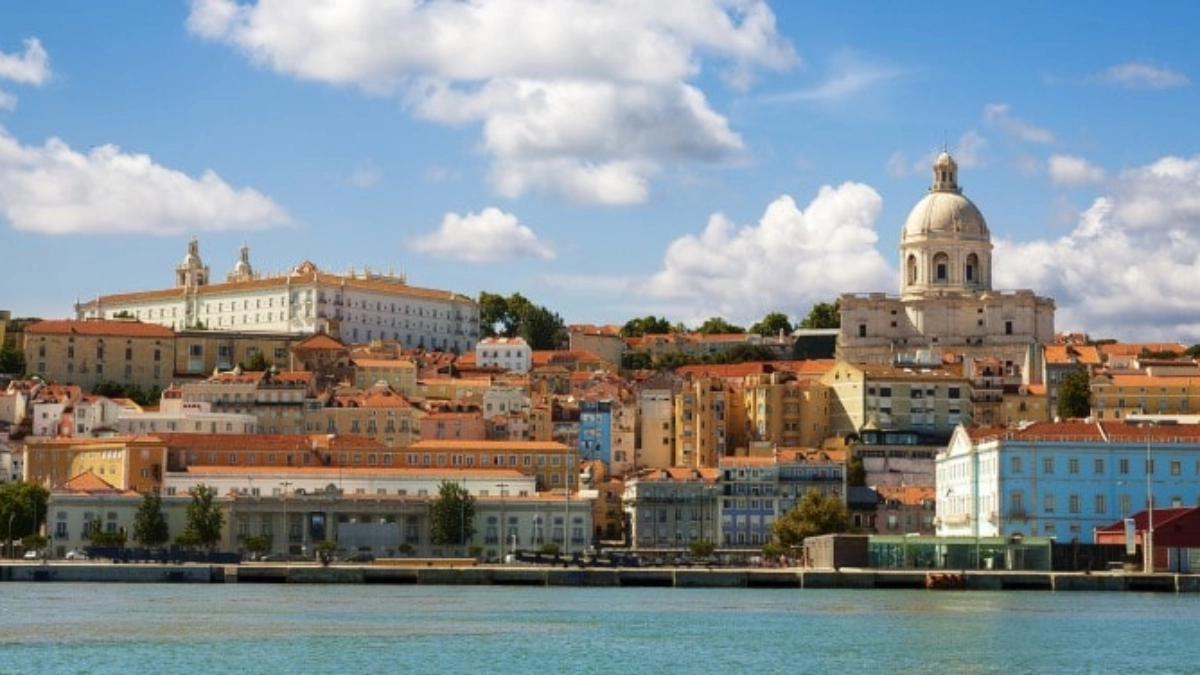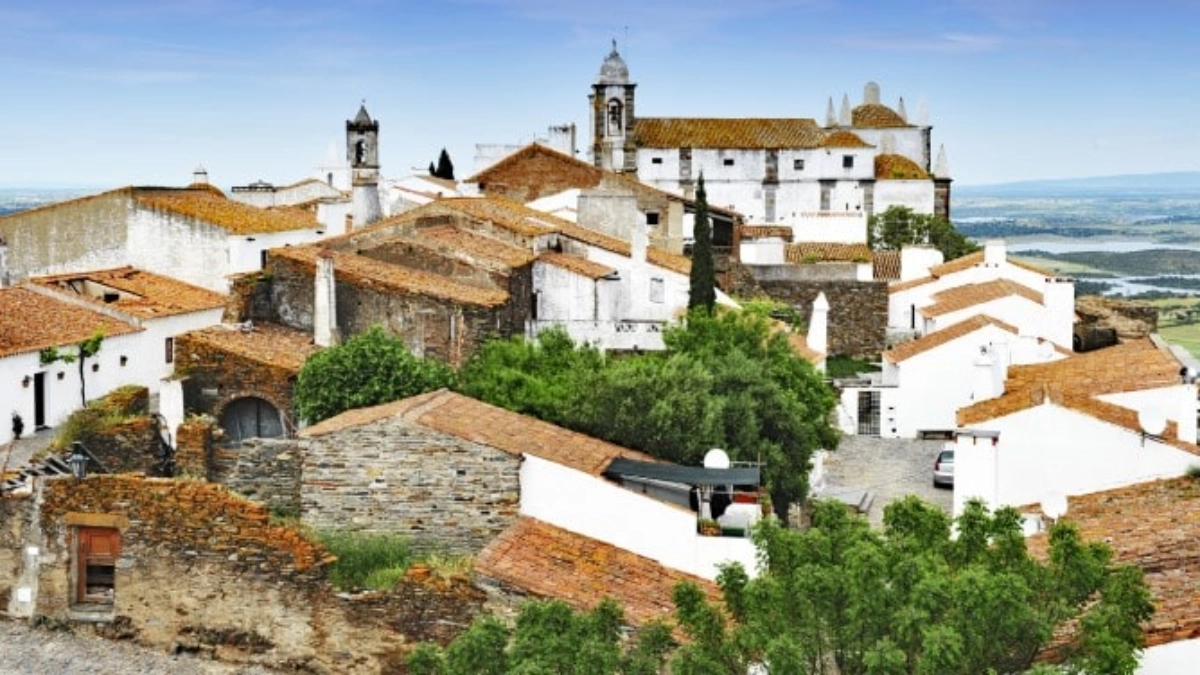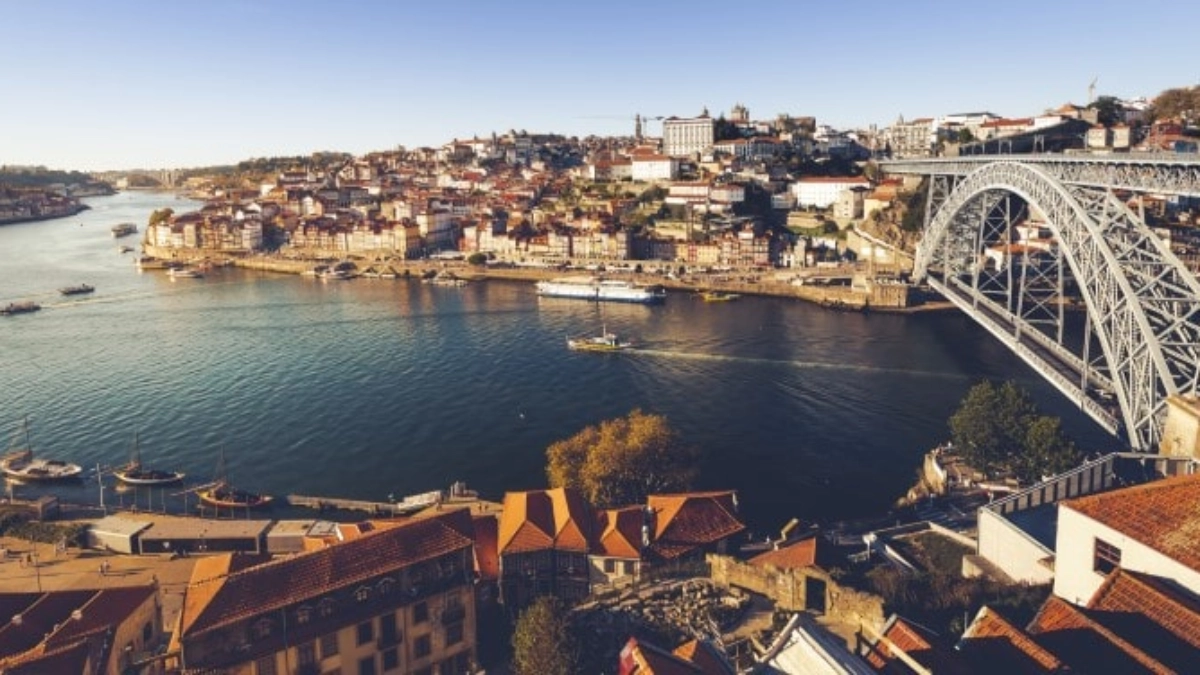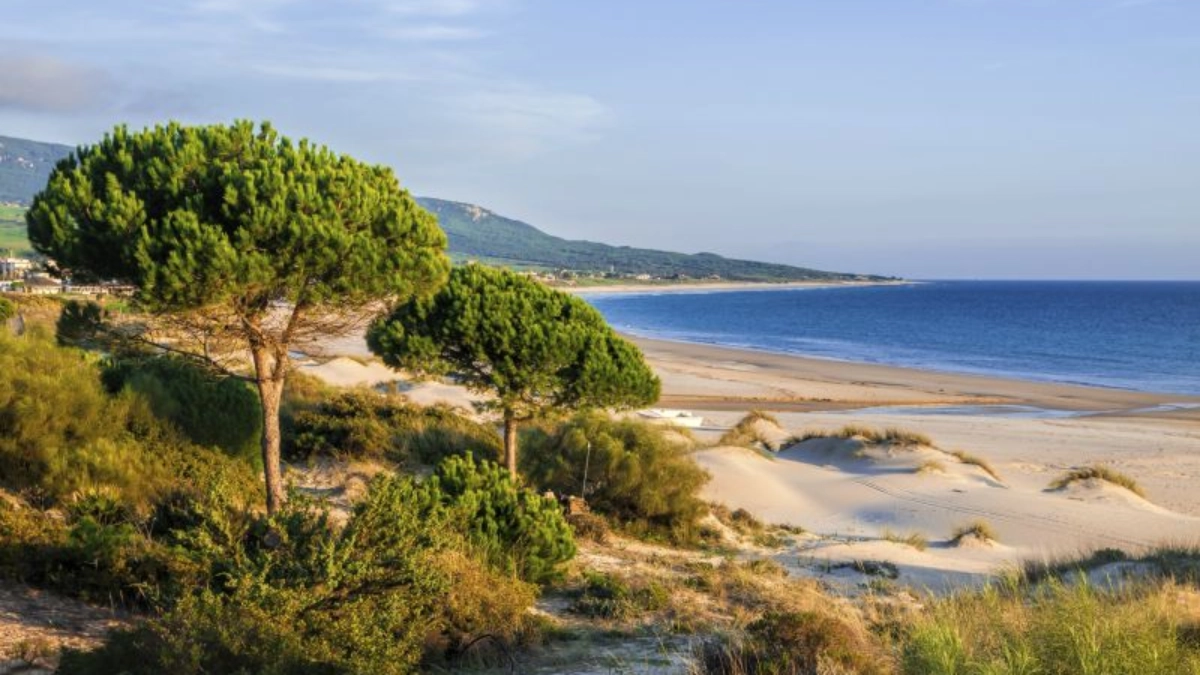5 most beautiful regions in Portugal
Portugal is packed with stunning landscapes, cosy little towns, and cultural landmarks you won’t forget. From golden beaches and dramatic coastlines to rolling vineyards and ancient castles, every corner of Portugal has something special waiting to be discovered. Oh, and the hidden gems? They’re the kind of places you’ll be talking about for years.
Whether you’re up for a thrilling adventure, love great food, or just fancy chilling with a breathtaking view, Portugal has you sorted. Here are five of the most gorgeous regions you’ll want to check out for your next trip.
1. Algarve
You’ll be spoilt for choice when looking for places to explore in the Algarve with its rich history, stunning beaches and an array of activities offering a variety of experiences for travellers from all walks of life.
Stretching from Monte Gordo in the east to Costa Vicentina Natural Park in the west, the coastline is a mix of wild, deserted bays, long swathes of golden sand and beach towns with plenty of nightlife.
If you’re looking for peace and quiet with natural beauty, head to the westernmost corner of the region, where you’ll find rocky coves and beaches backed by sandstone cliffs.
The Algarve is also a fantastic destination offering exciting outdoor activities, and water parks. One highlight is the Eco-Camp, which boasts an impressive pirate ship playground for kids to explore, and a variety of restaurants where you can taste local cuisine while enjoying live music.
For a livelier beach holiday, the seaside towns of Albufeira and Lagos have buzzy marinas, bars and restaurants serving fresh local seafood.
This region has plenty more to offer besides beaches. There are captivating Moorish cities and towns like Silves, with its terracotta-roofed houses and red-brick castello perched on a hill.
Tavira is home to azulejos-filled churches and a maze of cobblestone streets you can get lost in. Faro, with its tiny mediaeval centre, pretty squares and pavement cafes, is also worth a trip.
Things to do in the Algarve:
Faro is the best place to start your visit in the Algarve with its historic old town with narrow cobbled streets, Arco da Vila also known as the town arch which is the main gateway to the walled old town of Faro and a few museums and restaurants to explore. If you’re a foodie, then the walking food tour in Faro is a must-try, to experience authentic flavours of the Algarve. You’ll get to indulge in fresh seafood, savour local cheeses, and treat yourself to traditional sweets as you wander through the enchanting streets of the city.
Another hidden gem in Algarve is Tavira, a picturesque little town which is also home to Ria Farmosa, one of the seven natural wonders of Portugal and Castelo de Tavira, a mediaeval castle overlooking the charming fishing town.
For those seeking an active break, the miles of walking and cycling trails make the Algarve an ideal destination, be it hiking or cycling along the coast between small towns and fishing villages where tourists are barely seen.
Top tip: If you love golf, you’re in for a treat. With over 40 stunning courses to choose from, you’ll find yourself surrounded by breathtaking landscapes, impeccable service, and pro-shops to ensure you have everything you need for the perfect round.

2. Lisbon and the Tagus Valley
Lisbon is the most varied of Portugal’s regions. Whether you’re into culture, history, food, wine or nature, Lisbon is a must-do.
The cosmopolitan capital is surrounded by captivating destinations, including the royal town of Sintra and the stunning beach resorts of Cascais, Estoril, and Ericeira. There's so much to explore, including their nature reserves and vineyards.
The capital should be your first stop. Catch an impromptu fado session in the old neighbourhood of Alfama, stroll along the waterfront and take in city views from a miradouro at sunset, with a drink in hand.
Only an hour from Lisbon by train is Sintra, the summer holiday resort of Portugal’s kings, where you can witness extravagant nineteenth-century palaces.
When the sun sets, Lisbon comes alive with its buzzing nightlife. From old-school pubs to lively jazz clubs and nightclubs, there's no shortage of excitement.
The craft beer scene in the city is booming, with incredible breweries and bars just waiting to be explored.
Things to do in Lisbon and Tagus Valley:
Travel west along the coast and you’ll reach Estoril and Cascais, popular seaside resorts with wide sandy beaches to enjoy. Further along the Atlantic coast is Ericeira, a beach town with pretty whitewashed houses and fresh seafood aplenty.
Lisbon is fabulous for foodies. The capital is full of great places to eat, serving modern Portuguese cuisine to typical tabernas serving petiscos (small tapas-style dishes) and cevicherias. Costa Azul (the blue coast) is home to mouthwatering seafood restaurants, golf courses and miles of beaches.
This area also has two natural reserves. Sado Estuary Natural Reserve is a marshy wetland that is home to 250 bird species. Arrabida Natural Reserve is a hilly coastal park with hiking trails and sheltered coves perfect for snorkelling and diving*.
If you’re up for a bit of sightseeing, why not take in the beauty of Lisbon’s UNESCO World Heritage sites? Be awed by the intricate Manueline facades of the Mosteiro dos Jerónimos and Torre de Belém. Hop aboard one of the city’s iconic yellow trams as they wind through the historic centre or take a ride on the Bica and Glória funiculars.
Top tip: To the north and west of the city you’ll find a growing number of vineyards. Fancy a visit? Why not taste some of the wines and explore the vineyards yourself on a vineyard tour.

3. Alentejo
Alentejo is the rural heart of Portugal, filled with wheat fields, olive groves, pastures and vineyards. Foodies love this region for its hearty soups, meaty casseroles and cheeses.
Many towns have their own specialities – in Almeirim, try sopa de pedra, a rustic soup with beans, potatoes and cured meat. Don’t forget to try sericaia, a dessert of egg custard with sugar plums, in Elvas.
Wine lovers can follow the Alentejo Wine Route north from Beja to Vidigueira, Evora and Estremoz to sample the region’s aromatic whites and full-bodied reds.
The picturesque town of Évora offers yet another reason to visit with its maze of narrow, winding lanes encased by 14th-century walls. These picturesque streets lead you to landmarks such as a magnificent mediaeval cathedral, Roman ruins, and a town square that feels like a scene straight from a fairytale.
Alentejo’s towns and villages are worth exploring too. Marvao and Monsaraz are romantic fortified villages with breathtaking views over the surrounding rolling hills into Spain.
Things to do in Alentejo:
Évora is a treasure trove of history and culinary delights. From ancient Roman ruins to the hauntingly beautiful Capela dos Ossos, a chapel crafted from human bones, this city offers an unforgettable glimpse into the past. But Évora’s charm doesn’t end with its history. It’s also a haven for food lovers, boasting some of the finest Alentejan cuisine. The local restaurants serve mouthwatering dishes that are guaranteed to tantalise your taste buds. Extending from Costa Vicentina Natural Park to the Sado River estuary, Alentejo’s coastline is perfect for hiking, birdwatching, with many wild beautiful beaches and authentic fishing villages.
Alenjeto’s handicrafts are a must-have memento for anyone visiting the region. Make sure to set aside some time to explore the local shops, where you’ll find an array of beautifully crafted pottery and traditional handmade items. Scattered throughout Alenjeto, these treasures capture the essence of the area and make the perfect souvenir to bring home.
Top tip: The Alqueva Dark Sky Reserve is the go-to spot for walking, canoeing and horse-riding trips under a blanket of stars.

4. Porto and Northern Portugal
You’re going to fall in love with Porto, one of the most stunning spots in Western Europe. This dream destination is Portugal’s second-largest city, packed with historical landmarks and famous for its world-class port wine. And just a short trip away, you’ll find Peneda-Gerês National Park – one of Europe’s finest, offering endless outdoor adventures for nature lovers.
Delve into Portuguese history in the towns and cities of the north. Porto is a shipbuilding city with more than 1,700 years of history. Guimaraes was the first capital of Portugal and has a well-preserved mediaeval centre. While Braga is an ancient Roman town filled with churches, palaces and mansions.
Things to do Porto and Northern Portugal:
Tour the wine-producing villages of the Douro Valley, where port wine comes from. Originally, wine was transported down the river to Porto where it was aged in the wine cellars of Vila Nova de Gaia. It’s best to visit between September and October, during the grape harvest.
The mountainous north is fantastic for outdoor activities. Peneda-Geres National Park is home to four mountain ranges, where you can hike, bike, swim in natural pools and soak in thermal springs*.
Arouca Geopark, an area of mountains, deep gorges and fast-flowing rivers, is where to go for canyoning, canoeing, river-rafting and mountaineering*.
Top tip: Don’t miss the region’s many architectural marvels, from the baroque palaces of Minho to modern landmarks like the Casa da Musica in Porto, designed by Rem Koolhaas.
You can’t leave Porto without exploring the Ribeira district. Nestled along the banks of the Douro River, it’s full of energy from morning till night. While it’s touristy, there’s a good reason it draws so many visitors. You can stroll along cobbled streets lined with restaurants and bars where street performers add to the lively atmosphere.
Just a short walk from the river, you will also witness Casa do Infante, the birthplace of Prince Henry the Navigator in 1394. Known for funding Portugal's age of great explorations, he is celebrated by a striking statue outside the breathtaking Palácio da Bolsa. Don’t miss the chance to explore this stunning landmark.

5. Central Portugal
Central Portugal is one of the country’s best-kept secrets. It's relaxed, authentic, and offers a glimpse into the true essence of Portugal, far away from the crowds of major cities and tourist attractions. From stunning landscapes to cultural riches, this region offers an irresistible glimpse into the soul of Portugal.
Throughout the whole region, you’ll find bakeries selling cakes, pastries and sweets that originated in local convents and monasteries. You can also treat yourself to the delectable oysters from the serene waters of the Ria de Aveiro, or savour the irresistible roasted skewered piglet, famously known as Leitão.
The windswept Atlantic-facing coast has many authentic fishing towns, where boats bring in the local catch and restaurants dish up mouthwatering seafood casseroles and shellfish soups.
Beyond the incredible variety of food to indulge in, you'll find breathtaking landscapes, unique cultural traditions, and an array of fascinating world heritage sites and fortified towns.
Things to do in central Portugal:
Dive deep into history with a visit to Tomar. Its 850-year-old monastery that was once the headquarters of the Knights Templar, a place historians will love, with its UNESCO World Heritage Convent of Christ.
Discover Nazaré, home to the world’s most daring surfers and waves that tower up to an astonishing 30 metres. Once a place of untamed waters, inspiring tales of sea monsters, and the haunting legacy of fishermen’s tragedies, Nazaré has now transformed into a must-visit spot for those chasing thrill and adventure.
And for anyone looking for a peaceful retreat surrounded by stunning natural beauty, Bacalhôa Buddha Eden Garden offers an experience like no other. Wandering through this magnificent garden is a feast for the senses, offering a harmonious blend of art and nature.
For hiking*, head to Serra da EstrelaSerra da Estrela, Portugal’s highest mountain range, where you can follow miles of marked trails through beautiful valleys concealing mediaeval villages made entirely of schist and slate.
The Ria de Aveiro Estuary, Tagus International Natural Park and Sao Jacinto Dunes Natural Reserve are all excellent spots to go birdwatching.
* Hiking can be included in your cover, but certain restrictions might apply based on the activity's difficulty or altitude. Be sure to check out our full list of Accepted and Excluded Activities before heading off.
When’s the best time to visit Portugal?
If you want to soak up the sun without the busy beaches, visiting in March, April, May or September to October could offer a quieter, more relaxing holiday.
July and August sees temperatures soar to around 30 degrees, but as it’s the school holidays you’re likely to see busier beaches and tourist-filled streets.
Portugal’s weather can vary by region, so here’s what to expect:
-
The Algarve in the south is a sunseeker's paradise, boasting warm, dry days almost year-round. It’s a top pick for early or late-season getaways.
-
Lisbon and the central coast enjoy mild winters and hot, vibrant summers, making them great options for year-round visitors.
-
The northern regions, including Porto, are a little cooler and see more rain, especially in winter and spring. This makes the region lush and green, though you’ll want to pack a rain jacket just in case.
How long does it take to fly to Portugal?
Flying from the UK to Portugal will take between 2.5–3 hours, depending on which airport you fly from and into. With plenty of UK airlines offering direct routes to Portugal’s most beautiful regions, getting there is a breeze – whether you're heading to the golden Algarve or the lush Douro Valley.
Lisbon and the central coast – fly to Lisbon Airport (LIS)
Typical flight time: Around 2 hours 45 minutes
Direct flights from: London Heathrow, Manchester, Birmingham, Bristol, Edinburgh
Airport: Lisbon Humberto Delgado Airport – LIS
Lisbon’s main international airport, LIS, is just a convenient 20-minute ride by metro or taxi from the vibrant city centre. It’s the perfect starting point for your adventure. Imagine riding trams through the winding streets of Alfama, strolling along the waterfront at Belém, or experiencing the lively nightlife in Bairro Alto. Plus, from here, you can easily visit nearby attractions such as Sintra, Cascais, or the golden beaches of Costa da Caparica.
The Algarve – fly to Faro Airport (FAO)
Typical flight time: Around 2 hours 50 minutes
Direct flights from: London Stansted, East Midlands, Leeds Bradford, Belfast International, Glasgow
Airport: Faro Airport – FAO
Situated just 4 kilometres from the city centre, Faro Airport is the perfect gateway to Portugal’s breathtaking Algarve region. This sunny paradise is overflowing with magnetism, from golden sandy beaches to dramatic cliffs and lively holiday destinations such as Albufeira, Lagos, and Portimão – all within an hour’s drive. You'll be in awe of its beauty from the moment you land.
Porto and the Douro Valley – fly to Porto Airport (OPO)
Typical flight time: Around 2 hours 30 minutes
Direct flights from: Liverpool, London Gatwick, Birmingham, Glasgow, Edinburgh Airport: Francisco Sá Carneiro Airport – OPO
Getting from Porto Airport to the heart of the city is a breeze, thanks to its convenient metro system. Once you arrive, immerse yourself in the beauty of Ribeira, sip on Port wine at historic cellars, or take a peaceful cruise along the winding Douro River. The airport also serves as the perfect starting point to explore the stunning Douro Valley, known for its terraced vineyards and scenic train journeys.
Madeira – fly to Funchal Airport (FNC)
Typical flight time: Around 3 hours 45 minutes
Direct flights from: London Gatwick, Manchester, Birmingham, Bristol, Glasgow
Airport: Cristiano Ronaldo International Airport – FNC
Madeira might be a little further away, but it’s well worth the extra hour in the air. With direct flights from cities like London, Manchester, and Bristol, getting to this lush Atlantic Island is easier than you’d think. Once you arrive, you’ll explore Funchal’s beauty through its stunning coastal views, peaceful levada trails, and the quaint fishing village of Câmara de Lobos.
The Azores – fly to Ponta Delgada (PDL)
Typical flight time: Around 4 hours
Direct flights from: London Gatwick (seasonal)
Airport: João Paulo II Airport – PDL
If you're after a peaceful, less-travelled path, the Azores is worth the trip. São Miguel is a treasure trove of natural wonders like stunning crater lakes, relaxing hot springs, and whale watching, all surrounded by dramatic volcanic landscapes. Ponta Delgada is the perfect start to your adventure and gateway to everything this island has to offer.
With plenty of UK airlines offering routes to these destinations, finding a flight that suits your plans couldn’t be simpler.
Looking to plan a trip to Portugal? Travel insurance for Portugal has you covered.



